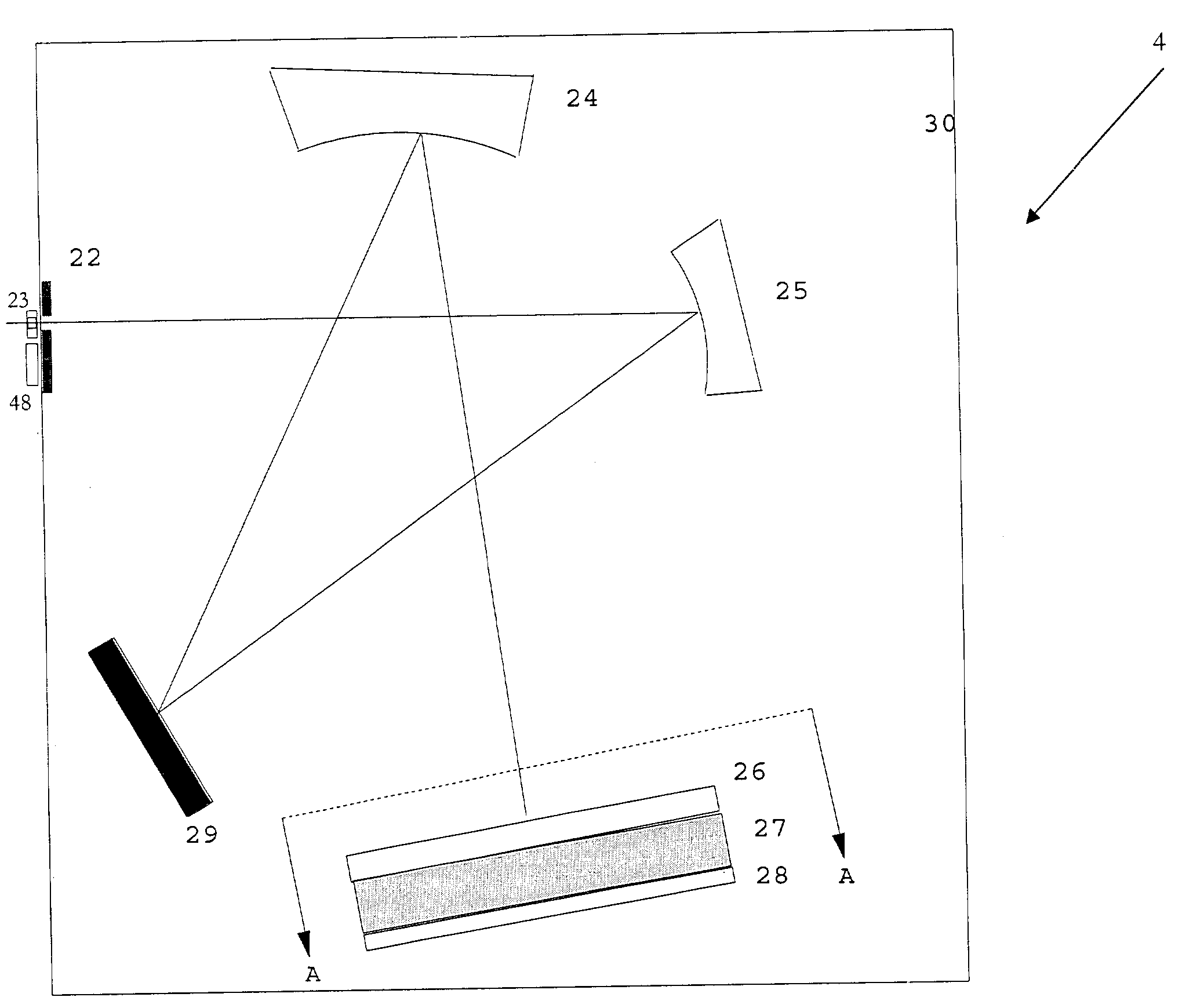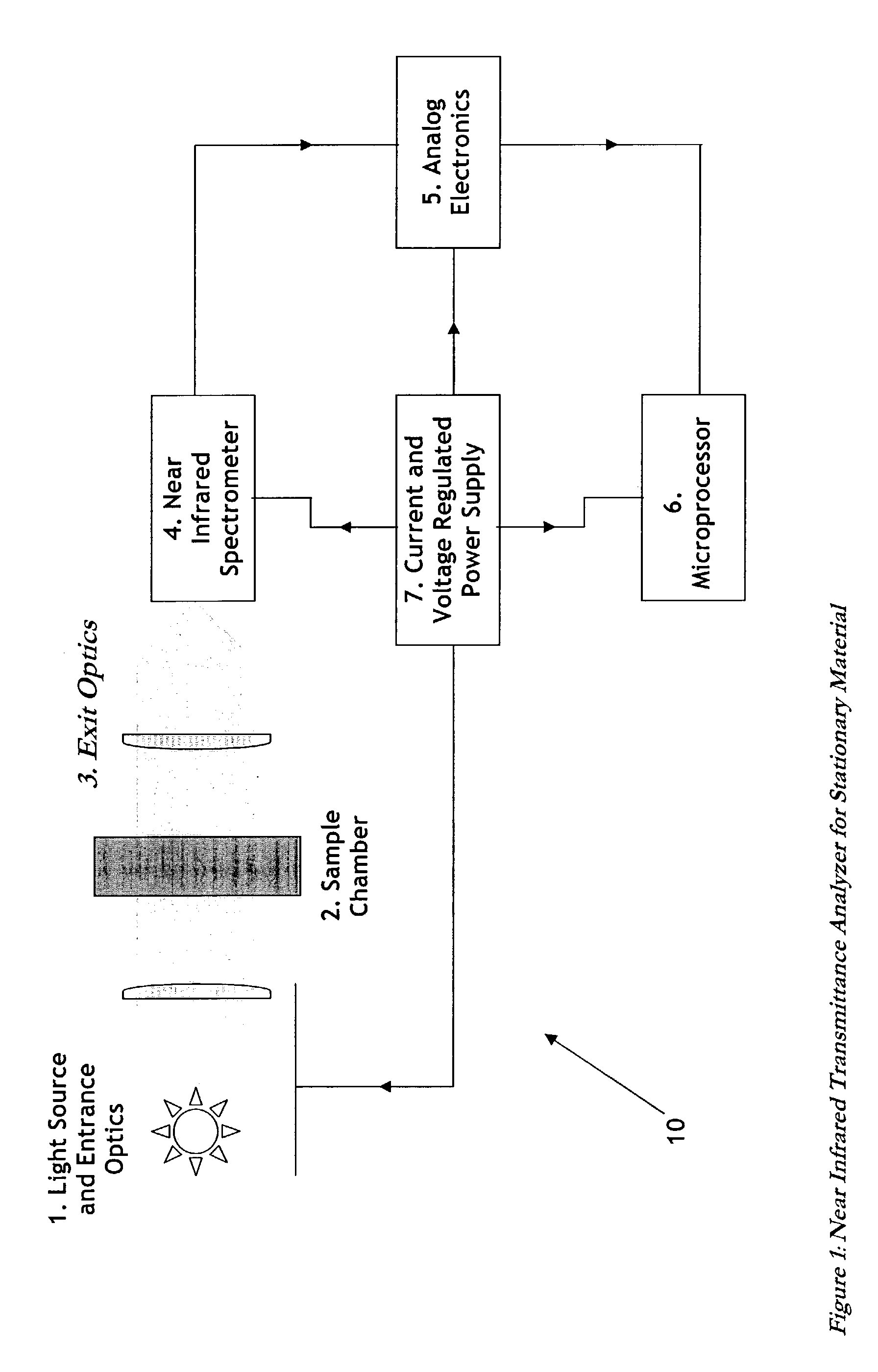High speed analyzer using near infrared radiation transmitted through thick samples of optically dense materials
a technology of optical density and analyzer, which is applied in the direction of optical radiation measurement, instruments, spectrometry/spectrophotometry/monochromator, etc., to achieve the effects of high sensitivity, low intensity radiation level can be measured quickly, and medium resolution
- Summary
- Abstract
- Description
- Claims
- Application Information
AI Technical Summary
Benefits of technology
Problems solved by technology
Method used
Image
Examples
Embodiment Construction
[0095]The following description of the present invention applies to its preferred embodiment. Those of ordinary skill in the art will understand that the present invention, however, is not limited to the described embodiment.
[0096]FIGS. 1–2 show a block diagram of the NIR analyzer 10 for use on stationary and flowable material respectively. Seven major components of the analyzer 10 are identified in FIGS. 1–2. These components and their functions are:[0097]Light source and entrance optics, comprising an incandescent light source 1 that generates a broad spectrum of radiant energy including a continuous component in the selected near infrared range. Part of this radiant energy is collected by a lens and collimated into an approximately parallel beam. This beam is transmitted through a transparent window 17 into the sample chamber 2 holding the material;[0098]Sample chamber 2 is a fixed rectangular chamber for holding the material whose constituents are to be measured, with the transp...
PUM
| Property | Measurement | Unit |
|---|---|---|
| near infrared wavelengths | aaaaa | aaaaa |
| near infrared wavelengths | aaaaa | aaaaa |
| wavelengths | aaaaa | aaaaa |
Abstract
Description
Claims
Application Information
 Login to View More
Login to View More - R&D
- Intellectual Property
- Life Sciences
- Materials
- Tech Scout
- Unparalleled Data Quality
- Higher Quality Content
- 60% Fewer Hallucinations
Browse by: Latest US Patents, China's latest patents, Technical Efficacy Thesaurus, Application Domain, Technology Topic, Popular Technical Reports.
© 2025 PatSnap. All rights reserved.Legal|Privacy policy|Modern Slavery Act Transparency Statement|Sitemap|About US| Contact US: help@patsnap.com



